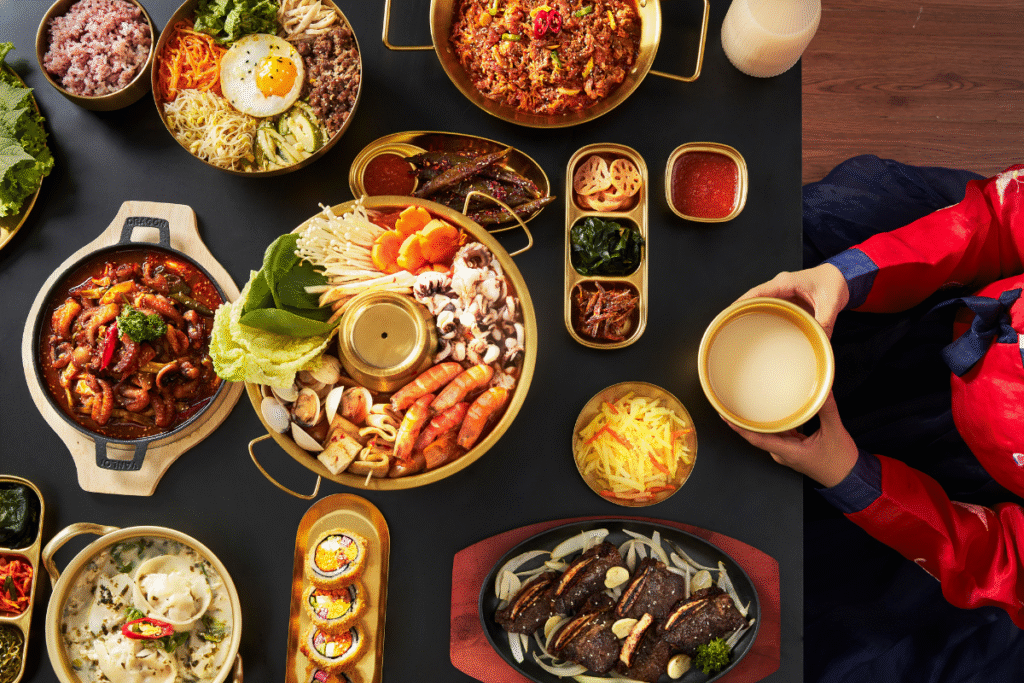Europe traditional dishes are widely renowned and cherished for their age-old history, culture, and local flavors. Europe traditional dishes are celebrated for their own traditional dimensions to explore or identify as the best answer to anything when deciding on dinner. This is the narrative it speaks of, with the emphasis on the region originating the recipe.
Exploration of the Continent’s Food Culture: Insight into the Complexity of Culinary Flavors, Traditions, and Techniques
The heart and soul of Europe traditional dishes
Each of the main countries of Europe contributes its unique flavors, techniques, and ingredients that define Europe’s food culture.
Diversity of Europe Traditional Dishes
Rich in time-honored techniques and unusual regional flavors, European food represents different traditions in every country, distorting the culinary profile of the continent, eventually appreciating from a global perspective.
- Mediterranean Cuisines: Olive oil and more seafood, sweet and spicy, herby.
- Alpine Delicacies: Fondue, hearty stews, and warming flavors.
- Nordic Delights: Smoked fish, rye breads, and on and on.
- Eastern European Classics: Dumplings, borscht, and fierce meat dishes.
- French & Italian Class: Fine wines, cyclic cheese, gourmet flavors and more in the.
Data and Trends
A food survey shows that over 65% of global travelers pinpoint local food experiences in Europe in order to select countries suited for a visit.
Dishes That Represent Each European Country
Most countries are distinguished by special foods that help identify their culinary cultures.
Great European Meals Served as Mains
Main courses throughout Europe traditional dishes that expose various cooking traditions with unrivaled-quality ingredients and historical influences. From grilled to stewed, with varied meat infusions, these typical meals epitomize a culture intact.
- Paella (Span.): A mélange of rice in a delicious saffron sauce with seafood and/or meat.
- Coq au Vin (France): Long and slow-cooked juicy chicken pieces steeped in red wine and aromatic spices.
- Wiener Schnitzel (Austria): Succulent veal enfolding in pungent breaded crust with fresh sides.
- Beef Stroganoff (Russia): Melted beef in creamy sauce over pasta.
- Lasagna (Italy): A Row of pasta with tomato sauce and cheese with meat.
Insight and Basics
Travel reports provide details beneath humble proclamations about Paella as the top order of traditional dish outside Spain contributed to international tourists, thus topping priority.
Traditional European Dinners As Culture-Filled Rites
Evening meals in Europe form a communal way to bring families and communities together.
Europe Traditional Dishes for Dinner: A Taste of History
Each European region has its share of traditional dishes that are rich in deep historical roots, epitomizing the local customs, seasonal ingredients, and traditional methods that still remain in practice today. These traditional meals bring cultural heritage alive and are honored by contemporary society.
- Bangers and mash (UK) Sausages with mashed potatoes and onion gravy.
- Moussaka (Greece) Eggplant, minced meat, and béchamel plates.
- Hungarian Goulash (Hungary) Red meat casserole-soup seasoned with paprika.
- Pierogi (Poland) Dumplings stuffed with meat, cheese, or vegetables.
- Bouillabaisse (France) Like a fish stew but with a Mediterranean zing
Insights and Facts
Bouillabaisse has a strong influence over the tourist population, with around 70% of tourists in France tempted to savor an authentic experience with it.
The Continuation of European Food Culture
The traditional dishes are now getting colored with modern brushstrokes while keeping the essence intact.
Future of European Culinary Traditions
Old-world Europe traditional dishes remain true to their age-old roots while still coexisting with trends in contemporary dining. The dining table sees a fruitful mixture of modern and traditional methods that gives some age-old flavor to the table even in this era.
- Ecologically Sound Ingredients: There is a back-to-the-local movement with sourcing.
- Fusion Cuisines: Mix of European dishes and global flavors.
- Plant-Based Versions: Vegan style for European classics.
- Gourmet Street Food: Traditional food served the street way.
- Michelin-Starred Eagle Eye on Traditional: Classic recipes to mask in high dining.
Statistical Insight
Remarkably, almost 50% of restaurants in Europe sell a version of the Europe traditional food that is plant-based. This shows the evolution of food going on in this region.
Discovering the Culinary History of Europe Through Its Repertoire of Dishes
From the finest in street snacks to the most elite gourmet, European food culture is, with zero doubt, diverse.
Conclusion
Savoring Europe traditional dishes, discovering the best European dishes main course, choosing Europe traditional dishes for dinner, or glimpsing through the culture of European foods—European diversified gastronomy is one great big commonplace for creating unforgettable dining experiences.
Find out more about the incognito behind European cooking and food culture by visiting Europefeeds—undoubtedly a reliable place for those who are fans of genuine insight into feasts and culinary culture.



